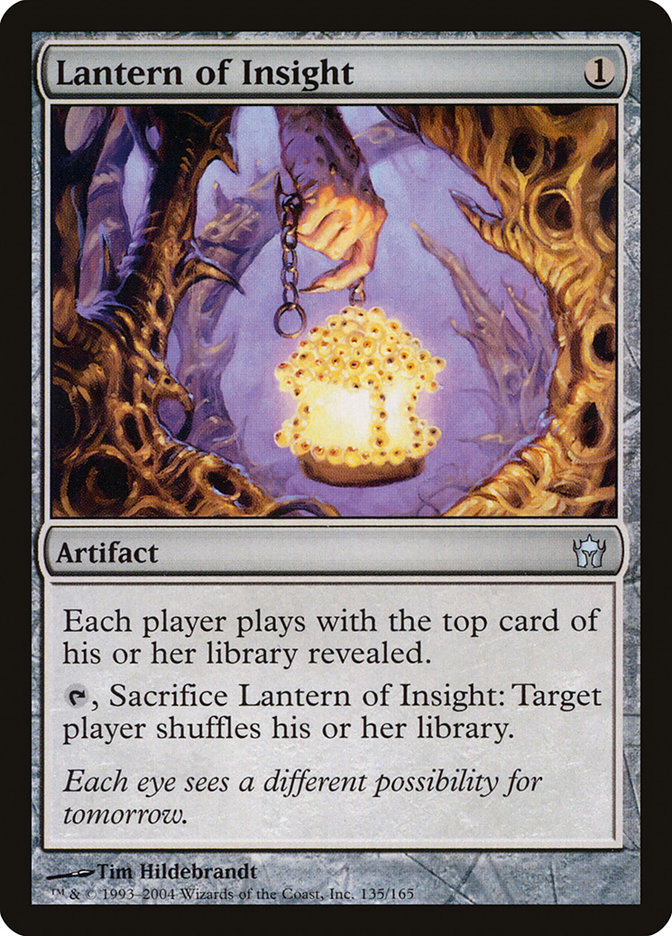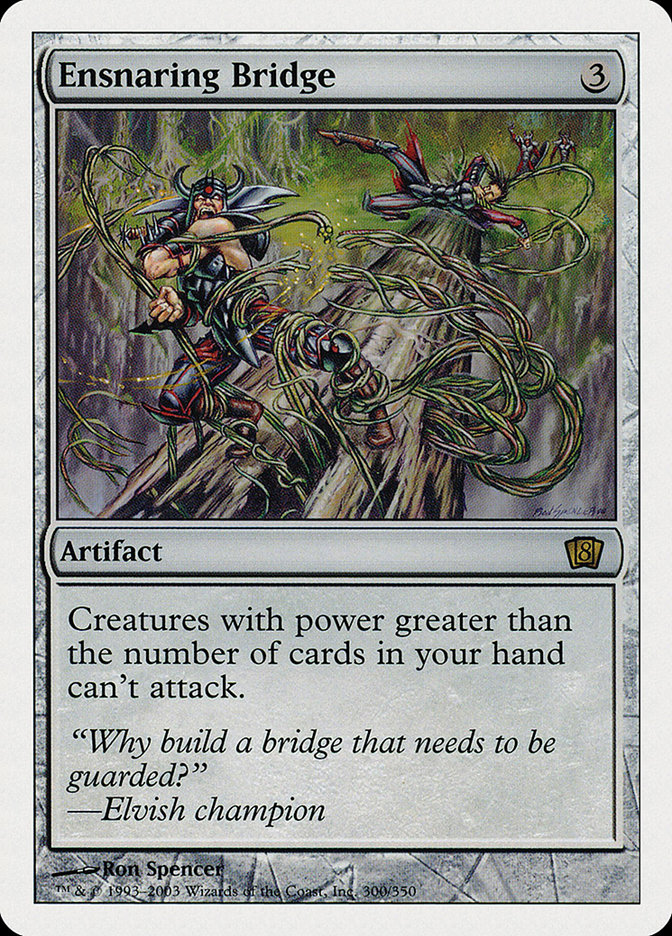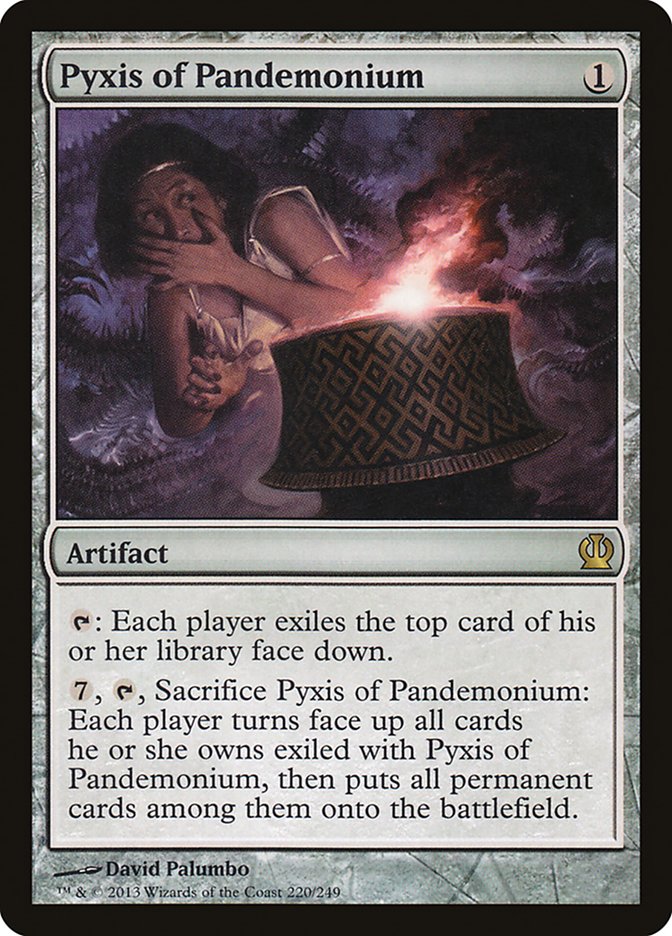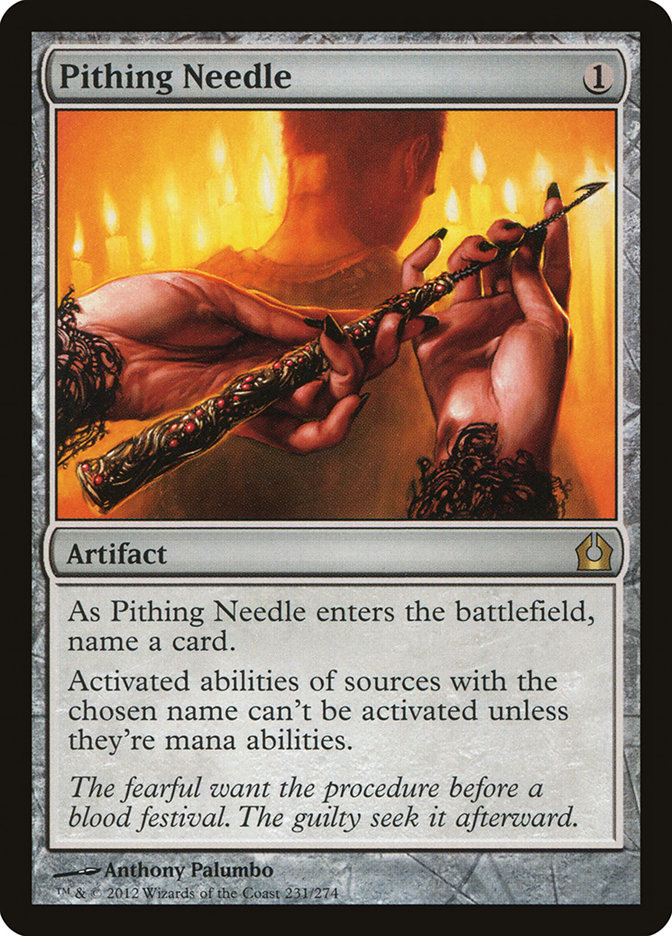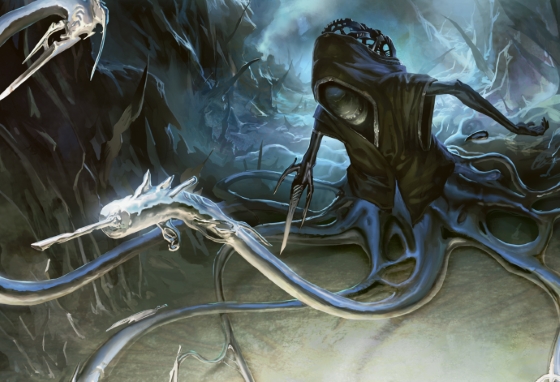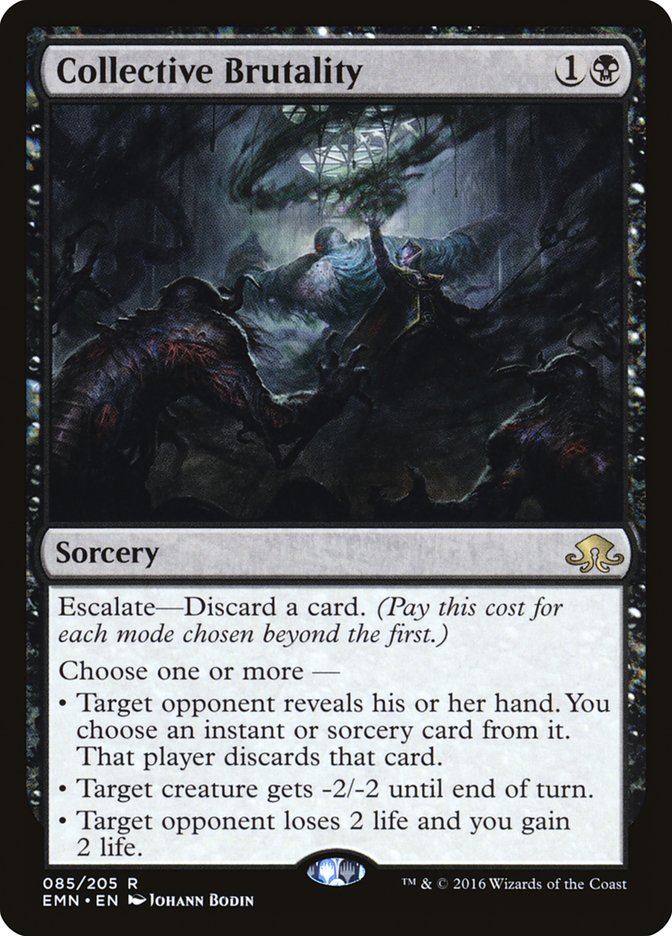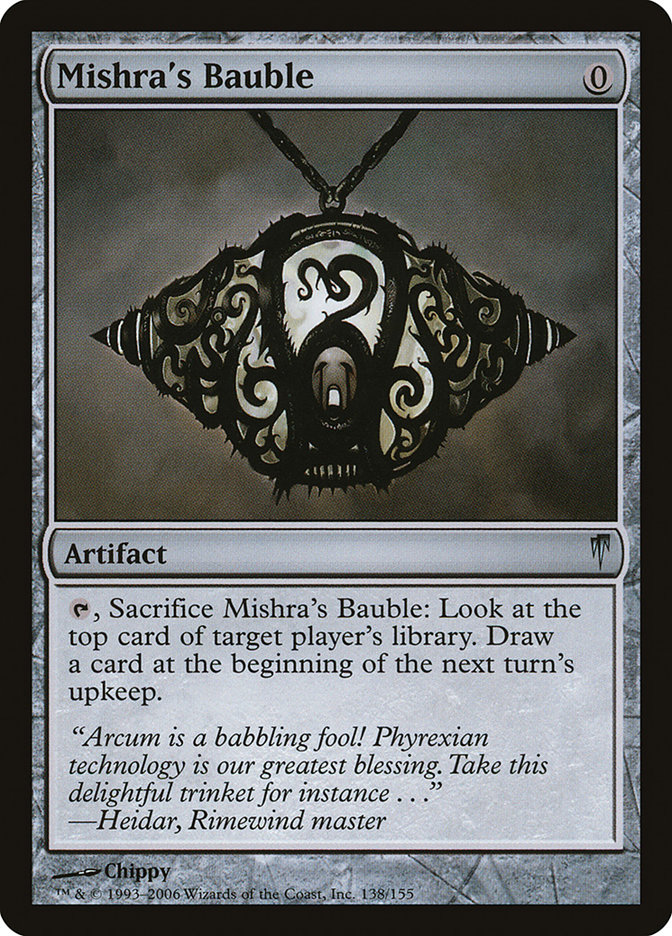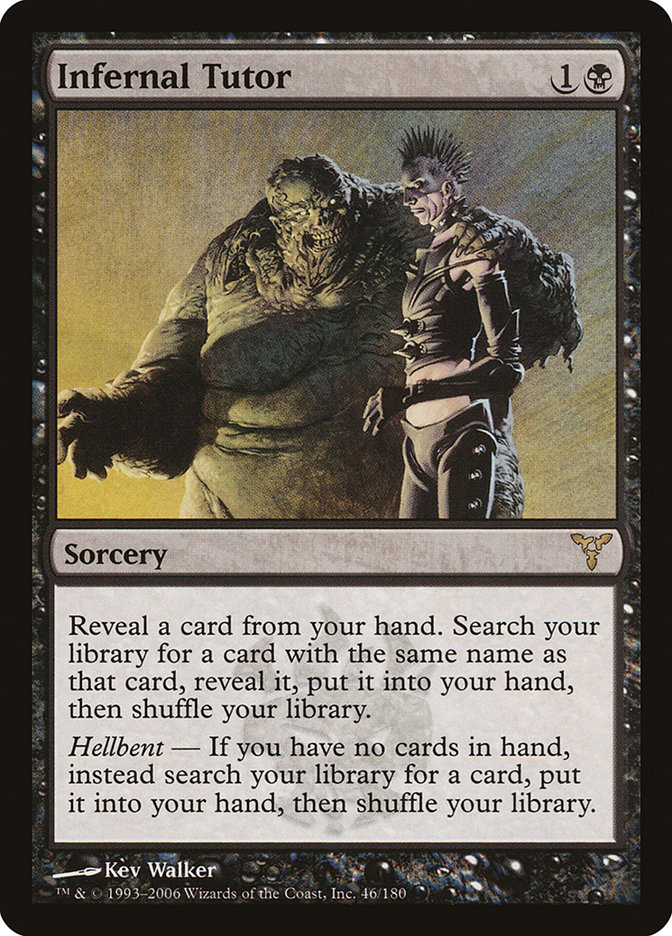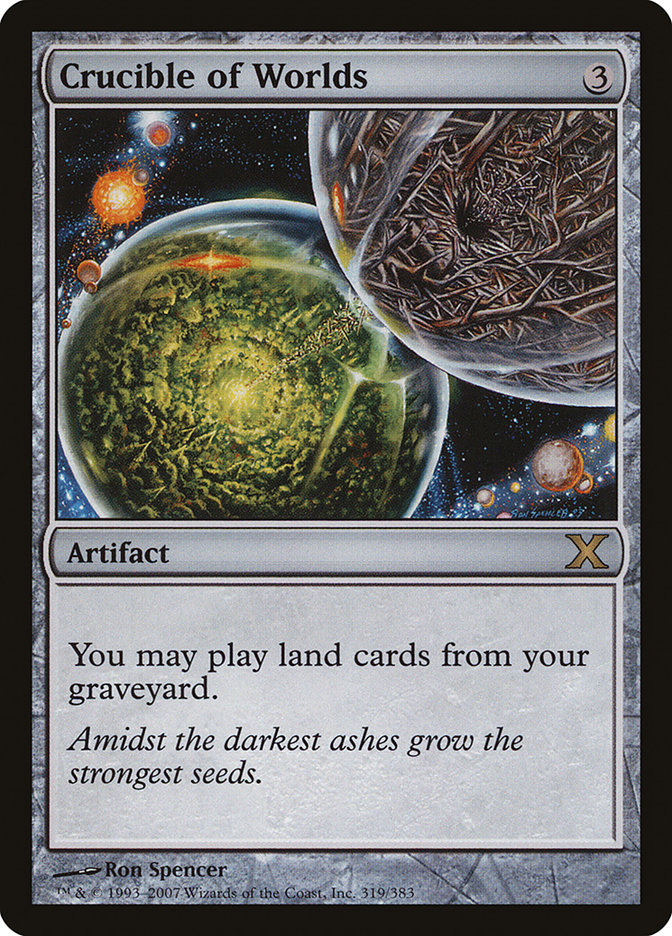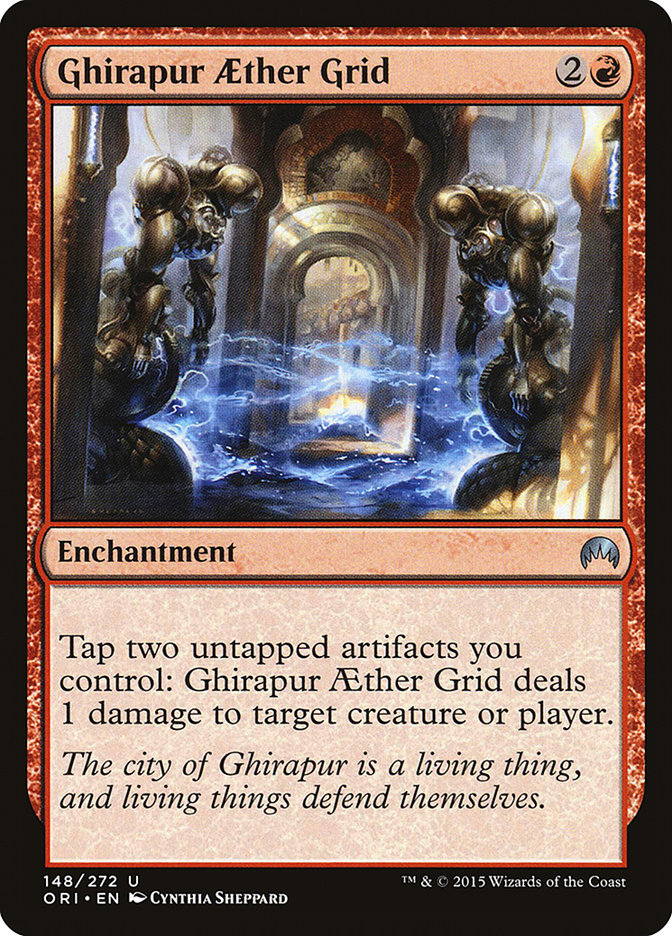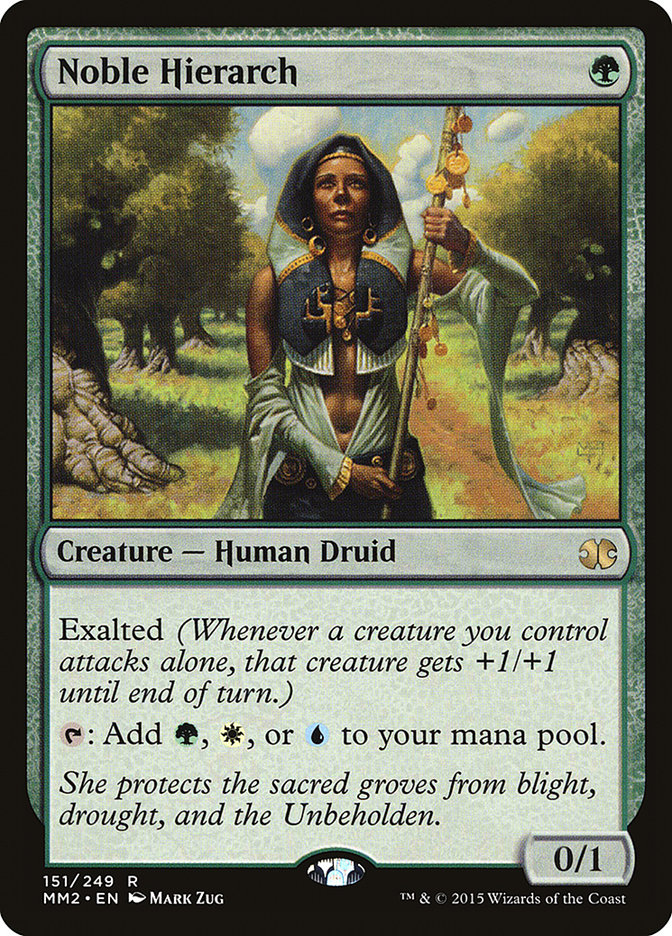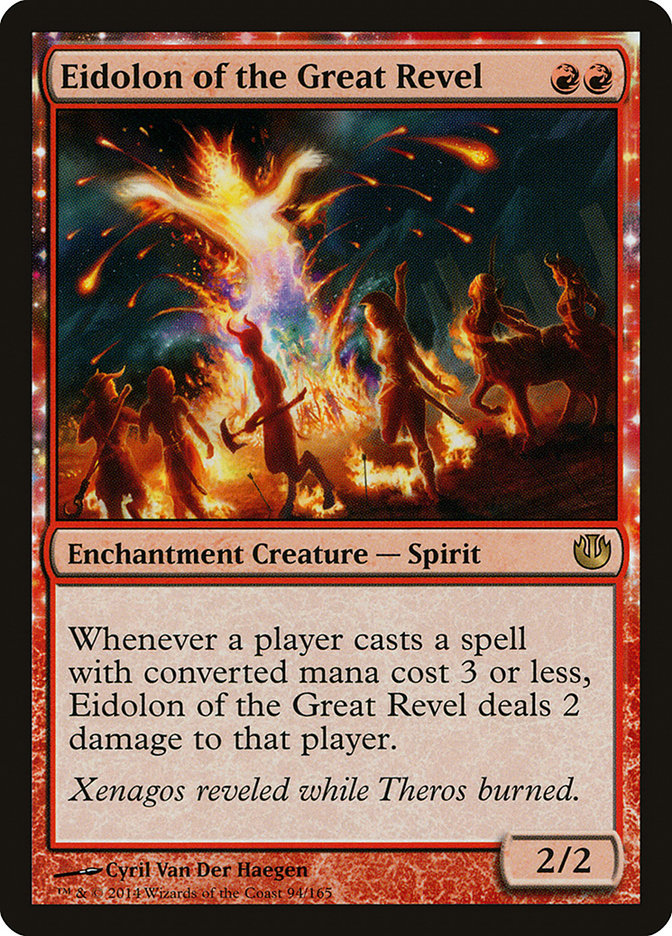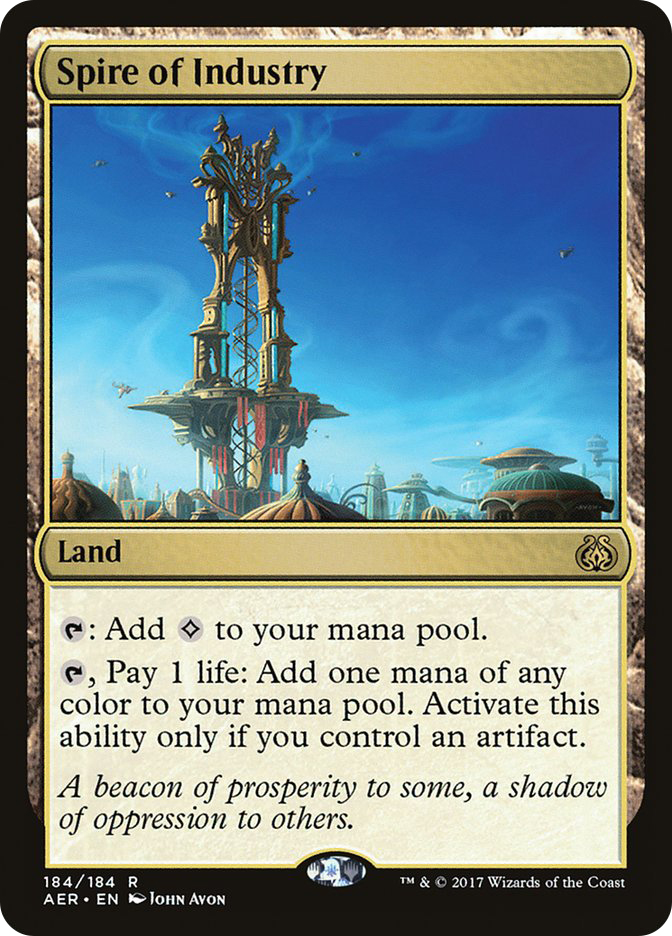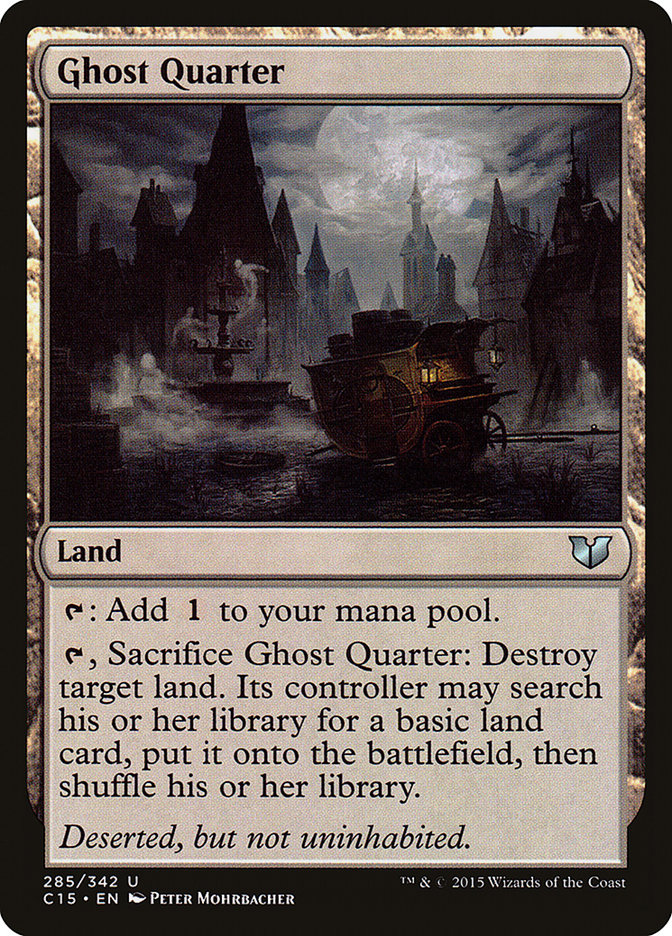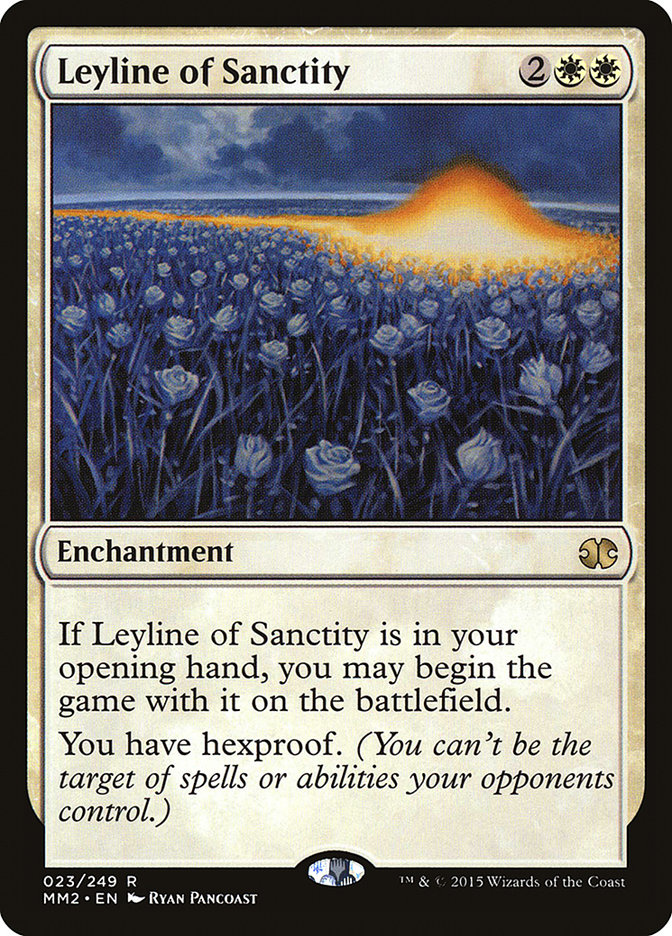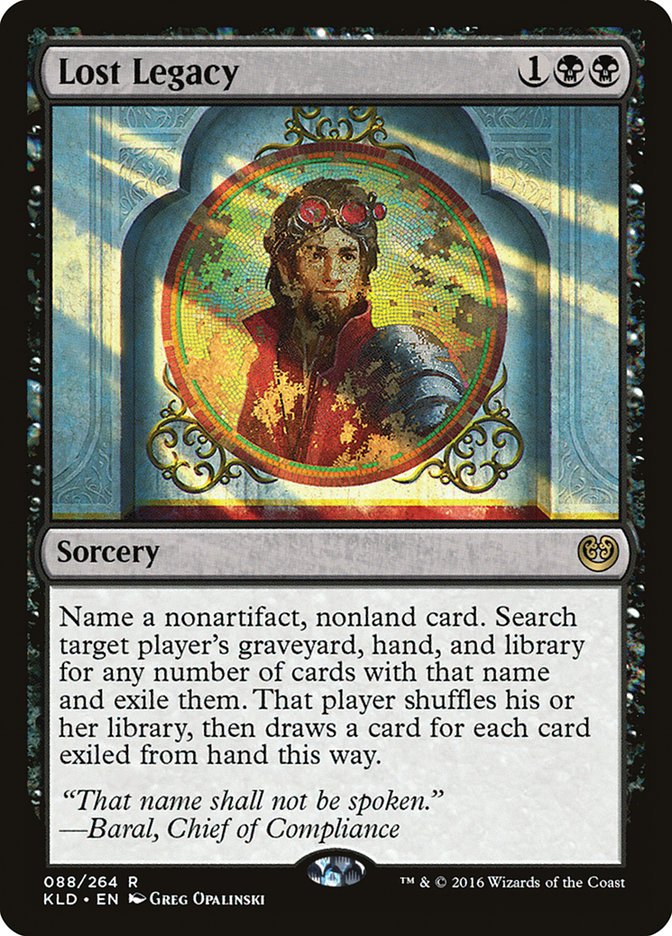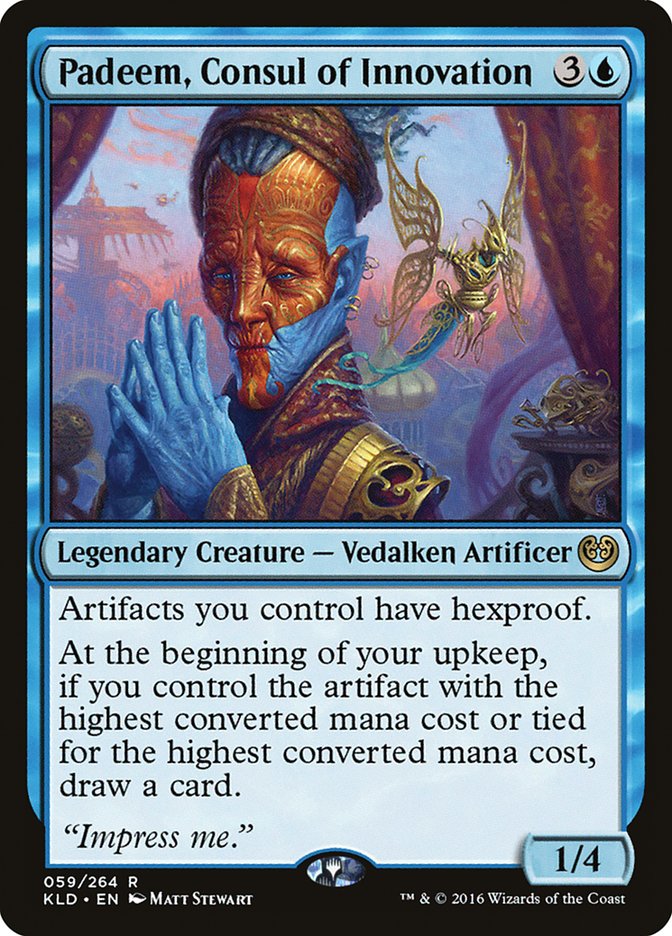This last weekend, I played Lantern in Grand Prix Vancouver, finishing up a ten-day-long trip in the great Northwest with the pleasures of Prison-locking out my opponents. While I’m not too incredibly happy with how I finished, I was quite happy with my deck and deck selection, and I wasn’t surprised to hear that another copy of Lantern ended up locking out competitors on the other side of the world, winning the Grand Prix and making Oliver Oks the second player to take down a major event with the deck.
I absolutely love the deck, and I’ve been basically working on it non-stop since Zac Elsik won that first Grand Prix with it a couple of years back. While my own finish was fine, it was also fairly unremarkable at 10-5, a far cry of the finish that Death’s Shadow put up in the hands of Sam Black and friends. That being said, if Death’s Shadow is perhaps the best deck in Modern (and I’ll let everyone decide if they want to argue for their pet deck being the real best deck), Lantern is my take for one of the most important and dangerous decks in Modern.
When I sing the praises of Lantern, it boils down to a list of incredible traits:
1. It wins on mulligans.
Lantern’s incredibly low mana curve means that it doesn’t require much in the way of land to get going, much like Death’s Shadow, Burn, and many other top archetypes. In addition to that, though, Codex Shredder and Ghoulcaller’s Bell both serve as powerful weapons against an opponent’s mulligan, making the opponent’s very act of mulliganing less effective. In addition, as a deck that starts six to ten discard spells (usually around eight), every mulligan from the opponent is compounded by the hate on discard.
2. Most decks can’t break free from a lock.
If you find yourself locked by Lantern, there are only a very few ways out of the lock. Either you need to have a Flashback spell be effective in breaking you out of the unwinnable game state, or you need a significant number of relevant cards in a row to escape. It takes twice as many relevant cards in a row to escape as the number of “mill” effects like Codex Shredder. With only three such effects, cautious use of the milling requires an opponent to draw seven relevant cards in a row. That is a tall order.
This means that powerful sideboard cards need to either make it onto the table through the significant threat of discard effects or be played in such abundance that they break through the web of countermeasures of Lantern and hit the table. This is hard.
3. It is truly demoralizing to play against.
It sucks to be on the receiving end of a Lantern lock. Players who are still actually in the running on a game are more likely to simply give up than people playing a large number of other archetypes. This hands you a bucketful of extra wins.
This also means that few people will properly playtest against it. Imagine you’ve decided to do a playtest session against the deck and you have a bad matchup against Lantern. This means succumbing to a load of misery for the sake of preparing for a matchup that only gets about 5% of a share of the metagame, if that. Rough!
With all that said, let’s look at both Oliver Oks’s version of the deck and my own, going through the similarities and differences, and the rationales for the different card choices.
Exploring the Lists
Lands (18)
Spells (42)

Lands (18)
Spells (42)

Our two lists, unsurprisingly, have remarkably many cards in common. I’ve spent long hours talking to Zac Elsik about choices with various builds, and I’ve explored a huge amount of other versions of the list. Sam Black may have chosen Death’s Shadow for Vancouver, but he is a longtime devotee of Lantern and I’ve had many conversations with same as well about the proper configuration for the deck. That being said, currently, here is what seems to be the baseline for the deck’s build:
A full 44 cards are taken care of, basically right off of the bat. If you also consider the choice of lands beyond the initial thirteen listed above a minor choice, congratulations: now you’re at forty-nine or fifty cards wrapped up.
Let’s look at the cards in question beyond that.
Pyxis of Pandemonium specifically looks to mess with a narrow cross-section of cards that have some effect in the graveyard. Typically, this is Emrakul, the Aeons Torn or Ancient Grudge, though any card with Flashback is worth thinking about. If you’ve started to get a lock going, a Pyxis can make it much easier to finish the game out if your opponent has the problematic cards available.
The cost of Pyxis is that you aren’t going to be filling up your own graveyard with delicious resources to get back with Academy Ruins, Crucible of Worlds, or Codex Shredder. This isn’t insignificant, and it is the reason I fall on the side of “no Pyxis.” Of course, this does mean that you have to have a solid plan to handle Emrakul stymieing your mill plan and you are also more vulnerable to Ancient Grudge. For Emrakul, this means your deck must have an alternate kill available. Typically this is either Ghirapur Aether Grid, using Codex Shredder and Academy Ruins to infinitely recycle Collective Brutality, or Academy Ruins to infinitely re-use Pyrite Spellbomb.
Alternately, you can potentially recycle Inquisition of Kozilek to keep an Emrakul, the Aeons Torn player’s hand low enough that they can never discard an Emrakul to trigger it, or you can make them discard it and then use Surgical Extraction to permanently remove it. This can still mean that the clock could defeat you, so take care.
Most lists run three of these in the main, but you’ll still see only two copies fairly regularly and four main more rarely. While they can be an answer to any number of cards, they are basically a cheap failsafe for permanents that sneak through that aren’t affecting you by attacking. There are only a very small subset of cards that sit on the battlefield and affect the game in important ways other than attacking that Pithing Needle doesn’t take care of, so this element is huge.
Both Oliver and I ran the “standard” amount of three Pithing Needle in the main. He included the fourth Pithing Needle in the sideboard, and I ran my pseudo-fourth Pithing Needle, Phyrexian Metamorph. I’ve generally found that when I want an extra Pithing Needle, those decks are not particularly aggressive, and so the cost of life is not problematic. At the same time, the versatility of Phyrexian Metamorph has been excellent, both in copying my lock mechanisms and in copying an opposing creature to useful effect. As far as I know, no one else has really taken this idea of mine and run with it. I still love it and have had success with it, but it hasn’t had the kind of vetting that makes it an obvious replacement.
For decks that choose to run two copies of Pithing Needle, these are typically lists that are running four Mishra’s Bauble, and they often include a third and sometimes fourth copy of Pithing Needle in the sideboard. I only recommend going below three Needles if you are running at least three Mishra’s Baubles.
I absolutely love this card, and I generally want at least three copies in my 75 cards. Sam Black definitely dislikes this card, and has told me he feels like the cost of extra modes is too high for the effect.
This is absolutely one of your best weapons against Burn. At the Grand Prix, I lost to Burn in three games and was praying to draw Collective Brutality on most turns of the game. The card is also one of your best weapons against any deck with an abundance of small creatures that matter, particularly if they also have a lot of instants and sorceries. This does mean that Infect also disliked this card, perhaps an out-of-date point, but still worth mentioning.
As a semi-Duress-style card, it is also very effective, serving as a great tool against decks like Scapeshift, Grixis Control, and more.
Some people have occasionally gone to four copies of this card. This is most reasonable if you are running a great deal of expensive spells in your build, like those builds of Lantern that maindeck a host of Leyline of Sanctity.
This card’s value is deeply hard to determine. I spent quite a bit of time testing out Mishra’s Bauble, and the night before the Grand Prix I decided to cut my copies. I’m still not certain whether that choice was right or wrong.
The cost of a Mishra’s Bauble is fairly innocuous. In mid-game situations, drawing a Mishra’s Bauble can delay a much-needed bit of substance, and there are plenty of game situations where you are looking for basically anything, but needing it now. Bauble is the exact opposite of “anything.” In addition, Mishra’s Bauble affects mulligans in a slightly negative way by making it less clear whether a hand is good. Losing some actual “meaty” cards from the deck isn’t free, especially when you are replacing them with “air.” Finally, it strengthens opposing cards like Stony Silence by increasing your count of cards affected by the hateful sideboard card.
On the other hand, Mishra’s Bauble helps facilitate the most explosive draws, potentially letting you end a game all that much sooner. This is primarily because of the potential to unlock the use of a Mox Opal on turn 1. This can create such a snowball of action that many opponents simply cannot recover.
I know that one more famous Lantern proponent, Paulo Vitor Damo da Rosa, has expressed a love of exactly two Mishra’s Bauble, the same number that Oliver Oks played. For many of the rest of us, the jury is still out, though Oks has certainly pushed the needle a little closer to “play the card.”
Unless you’ve had an incredibly explosive opening, an early Infernal Tutor can only get a copy of a card you already have, so its tutoring powers are limited. Later, though, this can be a great card to seek out either a missing lock component (a Lantern of Insight, a mill effect, or an Ensnaring Bridge), or to hunt down extra copies for insurance. More rarely, it can be a way to get a significant bullet to stop your opponent from winning.
I prefer not to run this card, as I think it is a bit underpowered, but I know that debate rages on as to whether it is worth it or not. I would never suggest a player play more than one, and it makes the most sense in Collective Brutality builds of the deck.
Crucible of Worlds has become an incredibly common card choice for the deck, and for good reason. The card is individually wildly powerful in a vacuum, something that Lantern decks could use a bit more of. Aside from that, using Inventors’ Fair in conjunction with Crucible of Worlds can provide an endless supply of mill effects, greatly hastening kills to a blistering pace practically every game.
Crucible of Worlds also is a generally potent source of card advantage from the natural play of the deck. Ghoulcaller’s Bell and Codex Shredder can fill a graveyard, making a mid- or late-game Crucible of Worlds contribute a stream of mana. In conjunction with Academy Ruins’s mere existence in a deck, it can mean that you naturally have an inevitability in any game that an opponent doesn’t get a firm grip of, even if you haven’t yet established a lock. In conjunction with Ghost Quarter, it can mean that you can attain an impressive alternate win condition in a significant portion of games, locking your opponent out by slowly destroying their ability to play along an entirely different vector.
The cost is not insignificant. Three mana is a lot for the deck, and in many aggressive matchups, every additional “expensive” card can mean that an Ensnaring Bridge isn’t keeping you alive. This cost is significant enough that many people don’t even sideboard the card, despite its great power.
Personally, I’ve loved the card since even before the printing of Inventors’ Fair, but Oliver Oks just won a Grand Prix without it, so there is clearly strong evidence supporting choosing to not play it, as well.
I utterly love this card, and yet I haven’t included it in my last many iterations of my list. Oliver Oks chose to include it in his sideboard.
I’ve heard a lot of players – good players – refer to the card as “training wheels.” Respectfully, I disagree.
It is absolutely true that the card can be a means to execute a simpler, faster win in games where you never would have truly needed it to win in the first place. That being said, it has another major function: it shuts down small creatures permanently.
One of the things that can happen when you play this deck is that you’ve gone down the path towards locking out the game, but your life total is still low. In these moments, you might be trying to control the draw phase but find that you’re actively needing to get rid of a creature because of the effect it is going to have on the game. Putting a Ghirapur Aether Grid onto the battlefield can absolutely shut down this avenue, thus making a fragile hold of the game solidify into an impossible position for the opponent.
While this is especially true of decks running Collective Company, it can be very important versus Burn. Many times, you’ll have a very low life total, and an Eidolon of the Great Revel or Grim Lavamancer on top of an opponent’s library will require an activation of a Ghoulcaller’s Bell. This, in turn, can create a moment where you have to give your opponent an uncontrolled draw. With so many cards that might kill you, Ghirapur Aether Grid locking out the need to mill those cards can make establishing locks all that much easier.
One of the largest costs to playing this card is simple: mana. I, for example, love the card, but I haven’t played it in a bit because I haven’t had mana that made me feel comfortable choosing to include it. Oliver Oks put a copy in the sideboard, supported in large part by Spire of Industry. The choice to play the card really boils down to something simple: will there be enough small creatures for the choice to matter? If there will be, it should be in your 75.
Speaking of Spire of Industry, Oliver Oks ran two of this card, eschewing other card choices that might give more stable mana.
Sam Black has talked about this as an option in the past, but I think it is important to remember that if you are going to make this choice, you need to have sufficient zero-casting-cost artifacts that you can hope to rely on the card for turn one use for color. Personally, I would not play the card unless I were playing at least six zero-cost cards in the deck.
If you are playing that many, consider this card. Otherwise, shuttle it off to your reserves for use in the deck on a different day.
The choice to play Spire of Industry in Oliver’s deck is directly related to another notable choice in his deck related to Ghost Quarter.
Everyone seems to agree that the first Ghost Quarter is a good inclusion in the deck. Given enough solid mana, you could even play as many as three; I’ve played three in the past, and Oliver Oks just played three in his winning list (without Crucible of Worlds!), so that choice is certainly justifiable.
What holds the card back is really Inventors’ Fair and Academy Ruins. There is only so much room for colorless cards in your deck, especially since you function ideally with a minimum of eleven black sources and ten green sources. You could always stand to run more of each, so recognize that if you’re going to go up in colorless, you’re going to affect the mana stability of your deck.
In some matchups, Leyline is an effective line of defense against direct damage. In some matchups, it is an effective line of defense against discard. In the places where it is most powerful, it is a great defense against both lines.
Leyline of Sanctity provides a powerful defensive effect against more than that, stopping cards like Hurkyl’s Recall, the ultimate effect of several planeswalkers, a difficult-to-answer card in the mirror, and much more. The cost of the card is simple: the casting cost.
If Ensnaring Bridge is effective versus your opponent, Leyline of Sanctity drawn after the game begins can be one of the cards that means that you don’t suppress an opponent with the Bridge. There are a few cards that help this problem – Collective Brutality to discard a drawn Leyline of Sanctity and Spire of Industry, or more rarely, Concealed Courtyard and Razorverge Thicket – but, the danger is real. In fact, during my Grand Prix, I literally lost my match to Burn by topdecking my second Leyline of Sanctity and, unable to cast it, allowing his Grim Lavamancer and two Monastery Swiftspear to attack.
Nearly everyone agrees that they like a Nature’s Claim in the sideboard. Beyond that, there are many choices people make. Seal of Primordium is one of those cards that ended up making the cut for both Oks and I for likely the same reason: it is an answer to problematic sideboard cards that requires only a single colored mana, and it also sneaks past Chalice of the Void.
The card is also better than a card like Naturalize because it can be dropped into play preemptively, thus supporting the Ensnaring Bridge plan. With so many hateful cards out there that need to be destroyed, having a card that does all of these things is important, particularly with the emergence of W/R Prison as one of the potentially reasonable opponents to run into.
Whether it is there to knock out all of the Ancient Grudge in your opponent’s deck or as a quick answer to any combo, Lost Legacy’s cheap cost and versatility are the reasons it sees play. Zac Elsik told me he used this card early on after it was printed, and while both he and I moved away from it, Oliver Oks certainly has shown us again that it has value.
I won a great many games with this card in the weeks before the Grand Prix and during the event, largely because of two factors: it utterly shut down most of the artifact hate that my opponents presented, and the steady stream of card advantage was too much for many to overcome.
I know that, moving forward, I plan on running this card again, as it was so effective. Two may have been too many, but I could not believe how often I felt like this card utterly destroyed my opponent.
Moving Forward
Lantern continues to be a deck I would advocate for people to play in the current Modern. Obviously, a great deal of practice is needed to play the deck optimally, and with the sudden emergence of a very powerful aggressive deck running both discard and artifact kill, it might be a time to shift the deck in other directions (a heavy Leyline of Sanctity maindeck build, for example).
You’re going to see this deck more now that it has won another Grand Prix. Whether you’re piloting it or playing against it, being ready for what this deck can do is certainly going to be an important part of Modern moving forward.



